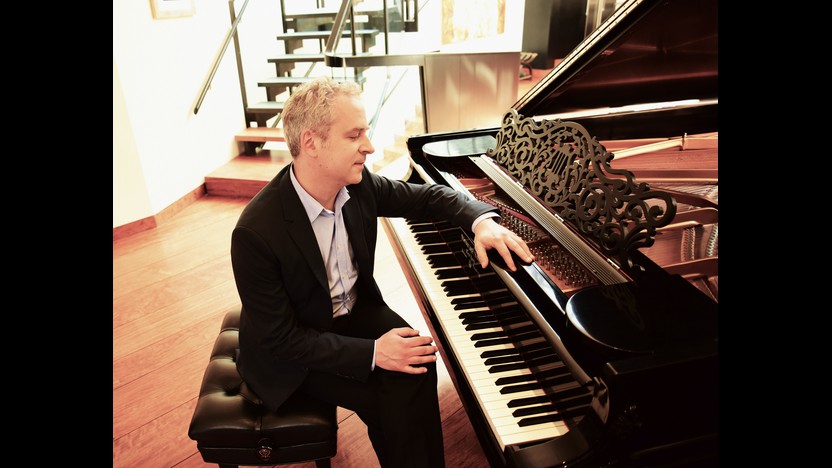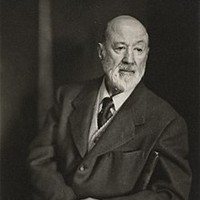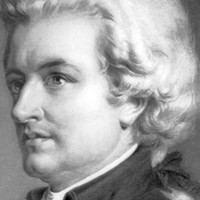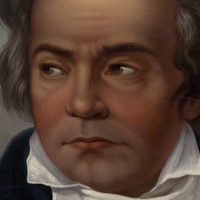Beethoven's Eroica Symphony

Sponsored By
- October 24, 2014


Sponsored By


In much the same way that Beethoven continued to resonate with every European composer throughout the nineteenth century, so has American music in the twentieth and early twenty-first centuries owed a great debt to the innovations of Charles Ives. Born in Danbury, Connecticut, in 1874, Ives is widely regarded as the twentieth century’s leading American composer of concert music. His innovative approach to the fundamental musical principles of harmony, rhythm, and structure laid the groundwork for subsequent generations of American composers.
Ives’s early musical training came from his father, George Ives, a multi-instrumentalist and bandleader. Through his father, Ives absorbed a wide range of musical styles, from the classical European canon to American popular music and Protestant hymns. A number of anecdotal images of George Ives’s unconventional methods of instruction have furthermore persevered, as if prophecies of innovations to be realized later in Ives’s music: for instance, the young Charles Ives singing songs in their original key, while his father played the piano accompaniment in a different key; or George Ives sitting with his son on the roof of their house to listen as two marching bands came towards each other from different sides of town. Perhaps apocryphal, such images nevertheless point to musical phenomena that Ives would later explore, such as using multiple tonalities, rhythms, and sonorities to create the effect of multiple layers of music happening at once.
Charles Ives’s adventurous, and oftentimes fearlessly dissonant, music puzzled many of his contemporaries and failed to reach a mainstream audience during much of Ives’s life. Thus unable to achieve commercial success through his music, but unwilling to compromise his rigorous compositional language, Ives led a remarkable double life: By day, he spearheaded one of the country’s most successful insurance companies; at night, on weekends, and even on the train during his morning commute, Ives composed, tirelessly extending the boundaries of musical tradition.
Ives’s Largo for clarinet, violin, and piano was originally conceived as a work for violin and organ; Ives settled on the trio instrumentation in 1901. Here we have music of strange beauty. The piano’s chordal introduction, at once poetically lyrical and strikingly dissonant, prepares the way for the equally piquant violin melody. With the addition of the clarinet’s warm, breath-based timbre, the mood turns melancholy, but quickly develops into livelier music. Though ephemeral, this Largo spans a broad emotive compass, as the wistfulness of its opening measures soon returns.
Patrick Castillo ©2014

Ives completed In the Barn for violin and piano around 1914, and later incorporated it as the second movement of his Second Violin Sonata, which received its first known performance in New York in 1924. The work reflects a countrified dimension of Ives’s American spirit: The violin takes on the role of a fiddler at a hoe-down. As was often his wont, Ives makes sly references to traditional American tunes—here, “Turkey in the Straw” and “Battle Hymn of the Republic.”
Patrick Castillo ©2014

By the age of 24, Wolfgang Amadeus Mozart had long outgrown his early fame as a child prodigy and his hometown of Salzburg, where he lived under the shadow of his controlling father and worked for a troublesome archbishop. Just as his frustrations were reaching a boiling point, Mozart received a welcome invitation to compose an opera in Munich, and, following that boost, he made a bold leap to strike out as a freelancer in Vienna. He soon established himself as the leading keyboard virtuoso in the imperial capital, and he built up a loyal following of patrons who would subscribe to his self-produced concerts. He earned particular renown for his piano concertos, of which he introduced 15 (out of a lifetime total of 27) just in the period from 1782 to 1786.
Mozart finished a Piano Concerto in D Minor on February 10, 1785, the day before its debut on his new subscription series. 151 patrons had registered for six concerts at a concert venue within a casino, and the frantic composer/soloist/copyist/impresario did not even have time to play through the finale before the performance, since he still had to finish writing out the orchestral parts.
This concerto’s key of D-minor invites comparison to the opera Don Giovanni, composed two years later, and filled with music of similar tension and foreboding in that same key. Delicate major-key contrasts and serene piano meditations offset the dark rumblings of the opening Allegro movement, but the pervasive D-minor mood does not release its grip — yet.
The label of “Romance” links the slow movement to an earlier style of simple, heartfelt vocal music. The main theme is disarming in its sincerity, with only a few modest ornaments for decoration as the piano elaborates the melody in conversation with the orchestra. The idyll breaks for a central minor-key episode, reintroducing some of the fervor of the outer movements, but the cozy tune returns.
The finale examines a different aspect of D-minor, with lively and extroverted music that recalls the taut angularity and linear drive of Johann Sebastian Bach’s pioneering keyboard concertos. A whimsical contrasting theme, heard first in F-major, returns in D-major after the cadenza, ushering the concerto out on a cheery note.
Aaron Grad ©2025

After writing a monumental symphony that dwarfed his two previous efforts (and those of all composers who came before him), Ludwig van Beethoven gave the Symphony No. 3 in E-flat Major the subtitle of "Bonaparte," honoring the military mastermind of Revolutionary France. But the composer’s adulation turned to disgust in 1804, when he learned that Napoleon had crowned himself Emperor; according to the student who delivered the disturbing news, Ferdinand Ries, “Beethoven went to the table, seized the top of the title-page, tore it in half and threw it on the floor.” When preparing the symphony for publication in 1806, Beethoven re-titled it "Sinfonia eroica, composed to celebrate the memory of a great man,” without specifying who that other hero was.
The defining motive of the Eroica Symphony’s first movement is a rocking cello strain that trails into foreign harmonies after four measures. As the central development section closes, a French horn makes a surprise entrance with a recapitulation of that same theme a few measures ahead of schedule — an effect so unexpected that even Beethoven’s student Ries, upon hearing the symphony for the first time, suspected the horn player of having lost count of the measures.
The symphony’s second movement, labeled a funeral march, sinks into a prolonged state of despair that might induce misery if not for its undeniable grace and beauty. A major-key interlude, providing respite, incorporates an arpeggiated accompaniment that recalls the gentle sway of the first movement. After returning to the minor key, the appearance of fugal counterpoint reinforces the profound, ceremonial atmosphere of the funeral march.
Out of this grief comes a giddy Scherzo, a symphonic construct that Beethoven popularized as an alternative to Franz Joseph Haydn’s slower, tamer minuets. A contrasting trio section features the three horns in vigorous hunting calls.
The finale, built as a theme and variations, incorporates material from the ballet The Creatures of Prometheus that Beethoven had also used in an earlier set of piano variations. A short but fiery introduction gives way to an unusual presentation of the theme, reduced to its bare skeleton.
Aaron Grad ©2024
This concert is part of our complete Beethoven symphony cycle.

Metro Transit is pleased to offer free rides to all October SPCO concerts. If you have tickets to October concerts, watch your email for a concert reminder including a link to download your free Metro Transit pass.
Get driving directions and find nearby parking.
Find dining options close to the venue.
View seating charts to find out where you'll be seating.
Get driving directions and find nearby parking.
Find dining options close to the venue.
View seating charts to find out where you'll be seating.
